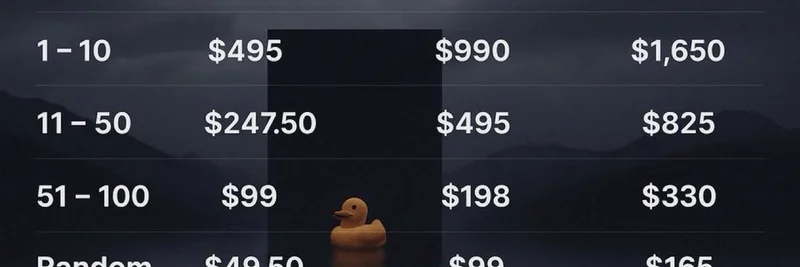Hey there, fellow crypto enthusiasts! If you're knee-deep in the world of blockchain like I am, you've probably heard the buzz around Quant Network and its native token, $QNT. Recently, a tweet from BSCNews caught my eye, posing the question: Is Quant the ultimate play for traditional finance (TradFi) embracing blockchain tech? They linked to a detailed analysis on their site, and I thought it'd be perfect to break it down here at Meme Insider. While we usually dive into the wild world of meme tokens, understanding foundational tech like Quant can give us an edge—after all, better interoperability means more room for memes to thrive across chains.
Let's start with the basics. Quant Network isn't your typical blockchain project; it's more like the glue that holds the fragmented crypto universe together. Founded back in 2015 by Gilbert Verdian—a guy with serious creds in cybersecurity from stints at Mastercard's Vocalink and even government roles—Quant aims to solve one of blockchain's biggest headaches: interoperability. That's a fancy term for making different blockchains talk to each other seamlessly, without all the hassle.
At the heart of this is Overledger, Quant's operating system. Think of it as the Windows or macOS for blockchains. It's not a blockchain itself but an API gateway that connects public and private networks like Bitcoin, Ethereum, and XRP Ledger. This means enterprises, banks, and governments can build apps that work across multiple chains without ripping out their existing systems. For meme token fans, this could mean easier cross-chain trading or even meme-inspired NFTs that hop between ecosystems effortlessly.
Overledger's Cool Features
Overledger packs some powerful tools:
Cross-Chain Connectivity: It links siloed blockchains, allowing secure data and asset swaps. No more waiting for bridges that could get hacked.
Smart Contracts in Any Language: You can write contracts in whatever programming language you prefer, and Overledger handles the secure communication without forking chains.
Tokenization APIs: With things like Overledger Tokenise, you can create QRC-20 (like ERC-20 but Quant-flavored) and QRC-721 tokens for digital assets and NFTs. Imagine tokenizing your favorite meme for real-world use.
Marketplace and Automation: The Overledger Network Marketplace lets you buy and sell multi-chain decentralized apps (mDApps) via smart contracts. Plus, Quant Flow automates financial stuff like payments and compliance, integrating with bank accounts and stablecoins.
This tech isn't just theoretical—it's got real-world chops, especially in TradFi. Quant's involved in central bank digital currencies (CBDCs) like Project Rosalind and the ECB's Digital Euro. They're streamlining cross-border payments, which could slash settlement times from days to seconds. For us in the meme space, faster, cheaper transactions mean more viral pumps without the gas fee drama.
The $QNT Token: Utility Over Hype
Now, onto the token itself. $QNT is an ERC-20 on Ethereum, but it's all about utility, not just being a store of value. Its total supply is capped at about 14.6 million tokens, with around 12 million circulating—no endless inflation here. Demand ties directly to Overledger use: to access APIs, you pay fees in fiat, which gets converted to $QNT and locked for 12 months. This creates a deflationary vibe, potentially reducing supply by 5-10% yearly as adoption grows.
Staking $QNT gives you governance perks, like voting on network upgrades. It's held by over 156,000 addresses, fairly decentralized, with big players like Binance holding small percentages. In the meme world, this stability could inspire similar utility models for tokens beyond just vibes.
Partnerships That Matter
Quant's not flying solo. They've teamed up with heavy hitters:
Oracle: For cloud integration, making mDApps easier to deploy.
LACChain: Connecting Latin American finance networks.
AllianceBlock: Bridging TradFi and DeFi, which could open doors for meme tokens in institutional plays.
They've also got backing from funds like A195 Capital and government nods in the UK and Australia. Projects like Quant RTT for instant asset tokenization and Privacy Pools for better transaction anonymity (inspired by Vitalik Buterin) show they're pushing boundaries.
2025 Outlook: Bullish on Adoption?
Looking ahead to 2025, the analysis suggests Quant could be a game-changer for TradFi's blockchain shift. With regulatory clarity on the horizon and more institutions dipping toes into crypto, Overledger's enterprise-friendly approach positions $QNT well. Price predictions? While I'm not giving financial advice, experts see potential upside as adoption ramps up—think increased demand from banks tokenizing assets or governments rolling out CBDCs.
But let's keep it real: Risks include market volatility, competition from other interoperability projects like Polkadot or Cosmos, and regulatory hurdles. Still, Quant's focus on compliance and real utility sets it apart.
In the meme token ecosystem, tech like this could supercharge things. Imagine meme coins seamlessly moving between Solana's speed and Ethereum's security, or even integrating with TradFi for wild liquidity. If you're building or trading memes, keeping an eye on Quant might just give you that insider edge.
What do you think— is $QNT the sleeper hit for 2025? Drop your thoughts in the comments, and stay tuned to Meme Insider for more on how blockchain tech intersects with the meme madness. For the full scoop, check out the original analysis on BSC News.

